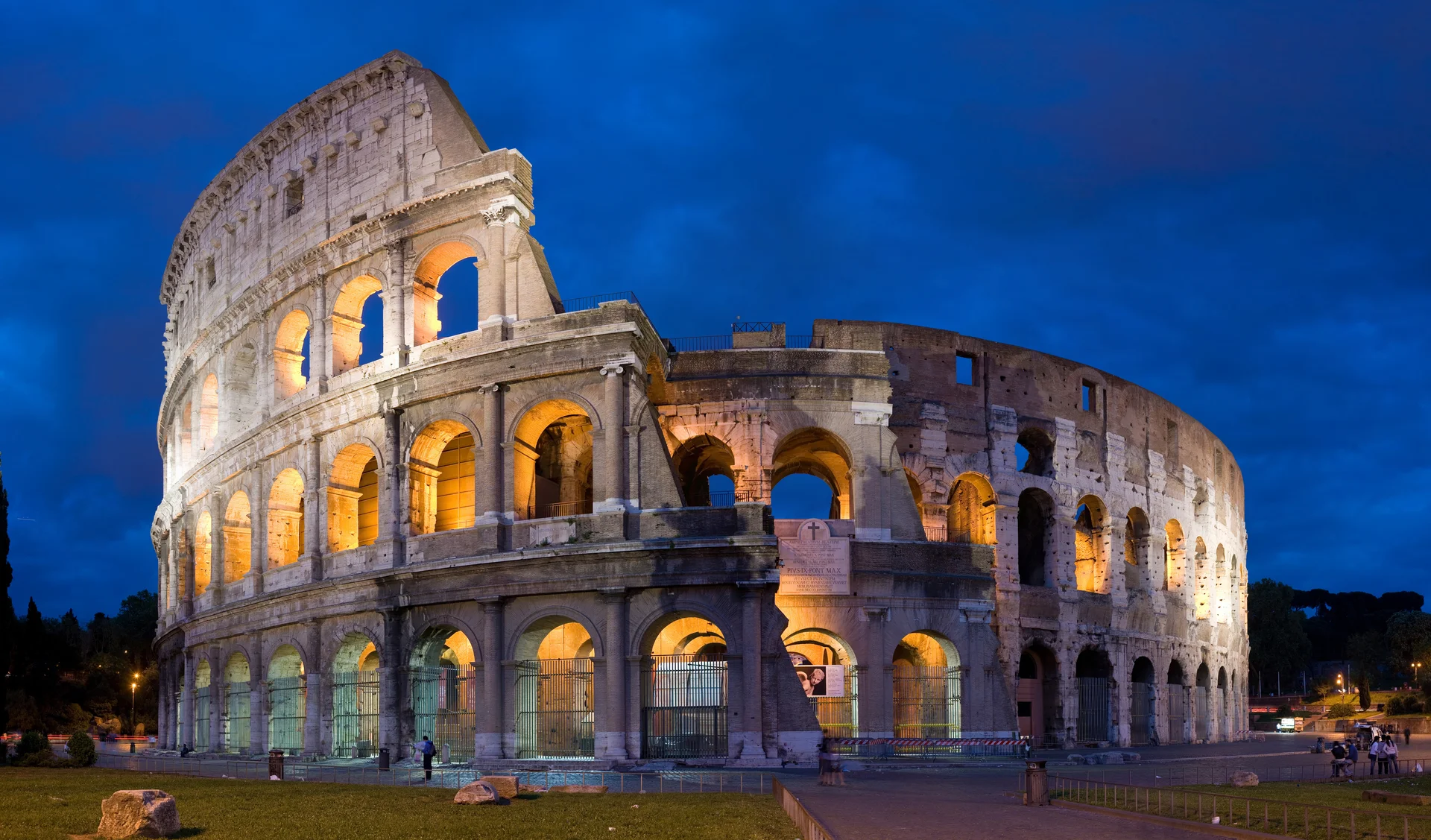
Rome's Mighty Colosseum and Its Ancient Gladiatorial Arena
Enduring Symbol of Roman Imperial Power and Spectacle
About This Site
The Colosseum represents the pinnacle of Roman engineering and architecture, standing as the largest amphitheatre ever built and the most iconic monument of the ancient world. This extraordinary structure, completed in 80 AD under the Flavian dynasty, showcases revolutionary engineering techniques including concrete vaults, sophisticated crowd management systems, and complex underground mechanisms that brought spectacular entertainment to 50,000-80,000 spectators. As the centrepiece of Rome's historic centre, the Colosseum embodies the grandeur of imperial Rome whilst demonstrating how public spectacles shaped Roman society, politics, and cultural identity throughout the empire. Its innovative architectural design influenced amphitheatre construction across the Roman world for centuries.
Why It Matters
This monumental amphitheatre demonstrates outstanding universal value as a masterpiece of human creative genius, providing unique testimony to Roman civilisation whilst representing an outstanding example of architectural achievement that illustrates the sophisticated engineering, social organisation, and cultural values of the ancient Roman Empire at its zenith.
Architectural Wonders of the Ancient World
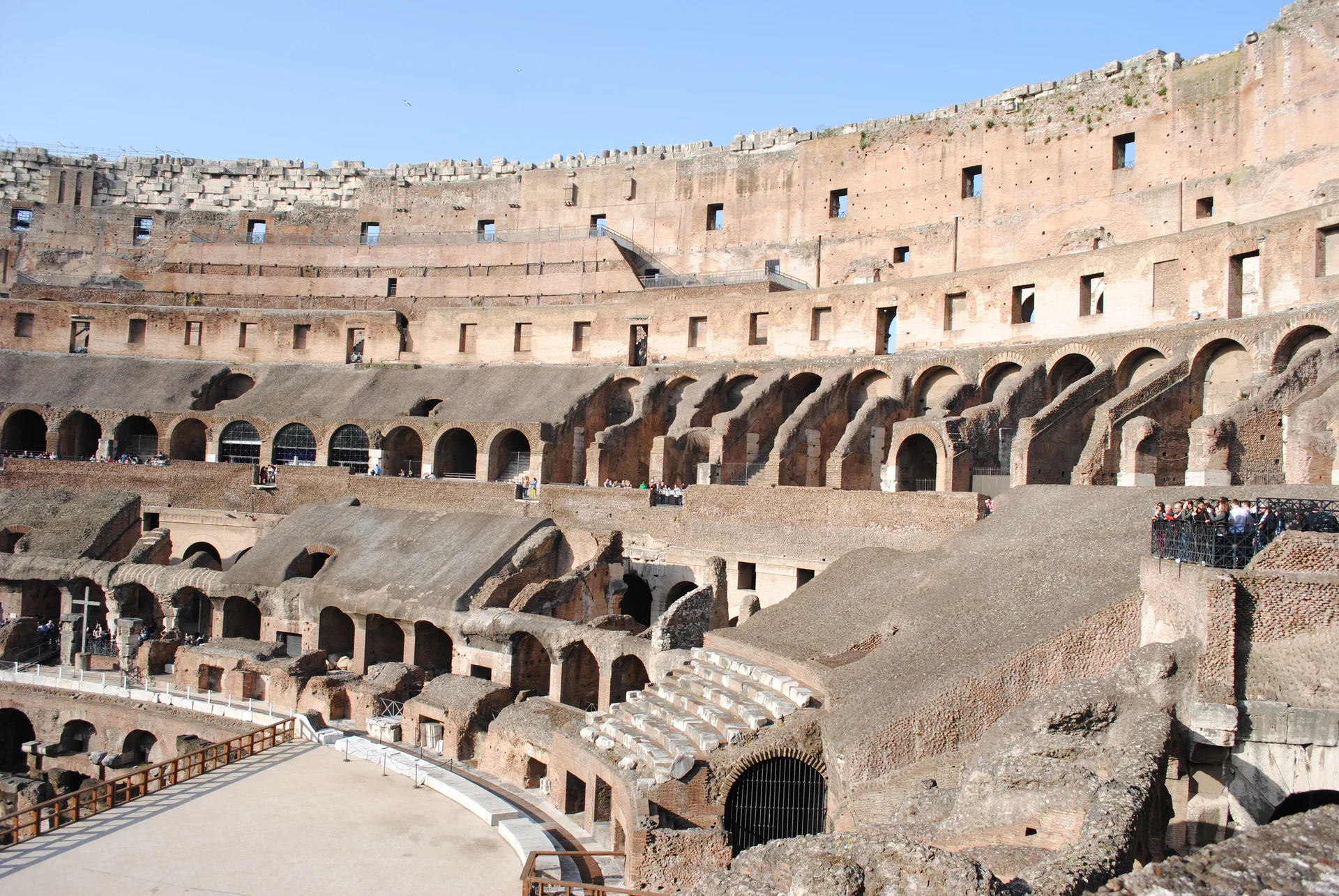
Arena Floor and Hypogeum Underground
Descend into the remarkable hypogeum beneath the arena floor, where gladiators and exotic animals awaited dramatic appearances through ingenious lift systems and trap doors. This two-level underground network of passages and chambers reveals extraordinary engineering with 80 vertical shafts connected to sophisticated pulley systems operated by hundreds of workers. Walking these ancient corridors where lions and elephants once waited provides intimate understanding of the complex logistics required for staging legendary Roman games. The partially reconstructed arena floor demonstrates how wooden platforms covered underground mechanisms whilst sand absorbed blood during gladiatorial combat.
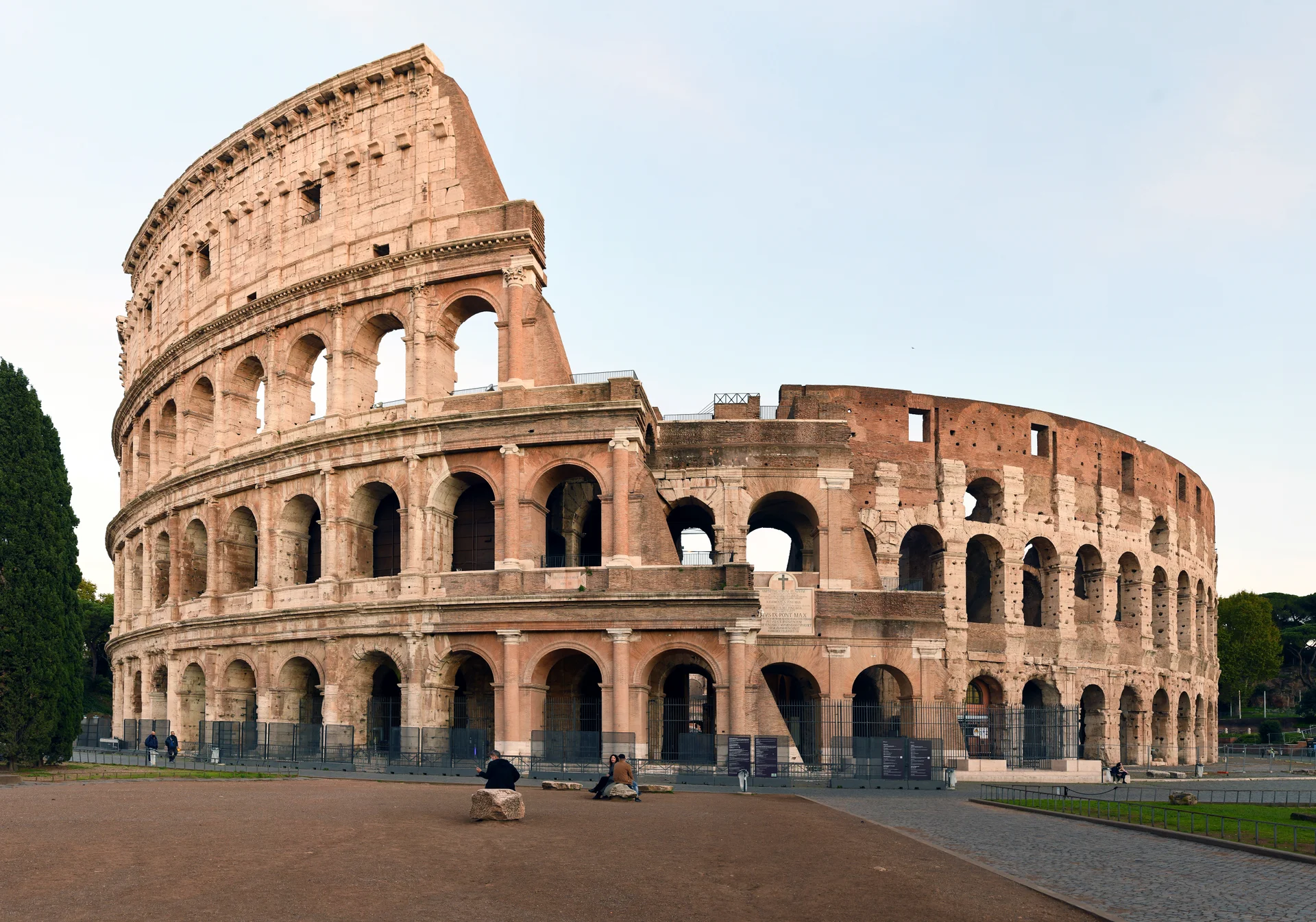
Architectural Orders and Facade System
Study the revolutionary facade system that influenced Western architecture for two millennia. The Colosseum's exterior presents a masterclass in classical design with four tiers displaying different architectural orders: robust Doric columns on the ground level, elegant Ionic on the second tier, ornate Corinthian on the third tier. This systematic progression from sturdy to decorative elements demonstrates sophisticated Roman understanding of visual hierarchy and structural logic. The 80 numbered arched entrances enabled efficient crowd flow—an innovation that modern stadium designers still study today. The travertine stone facade retains the magnificence that inspired Renaissance architects and continues influencing contemporary architectural design worldwide.
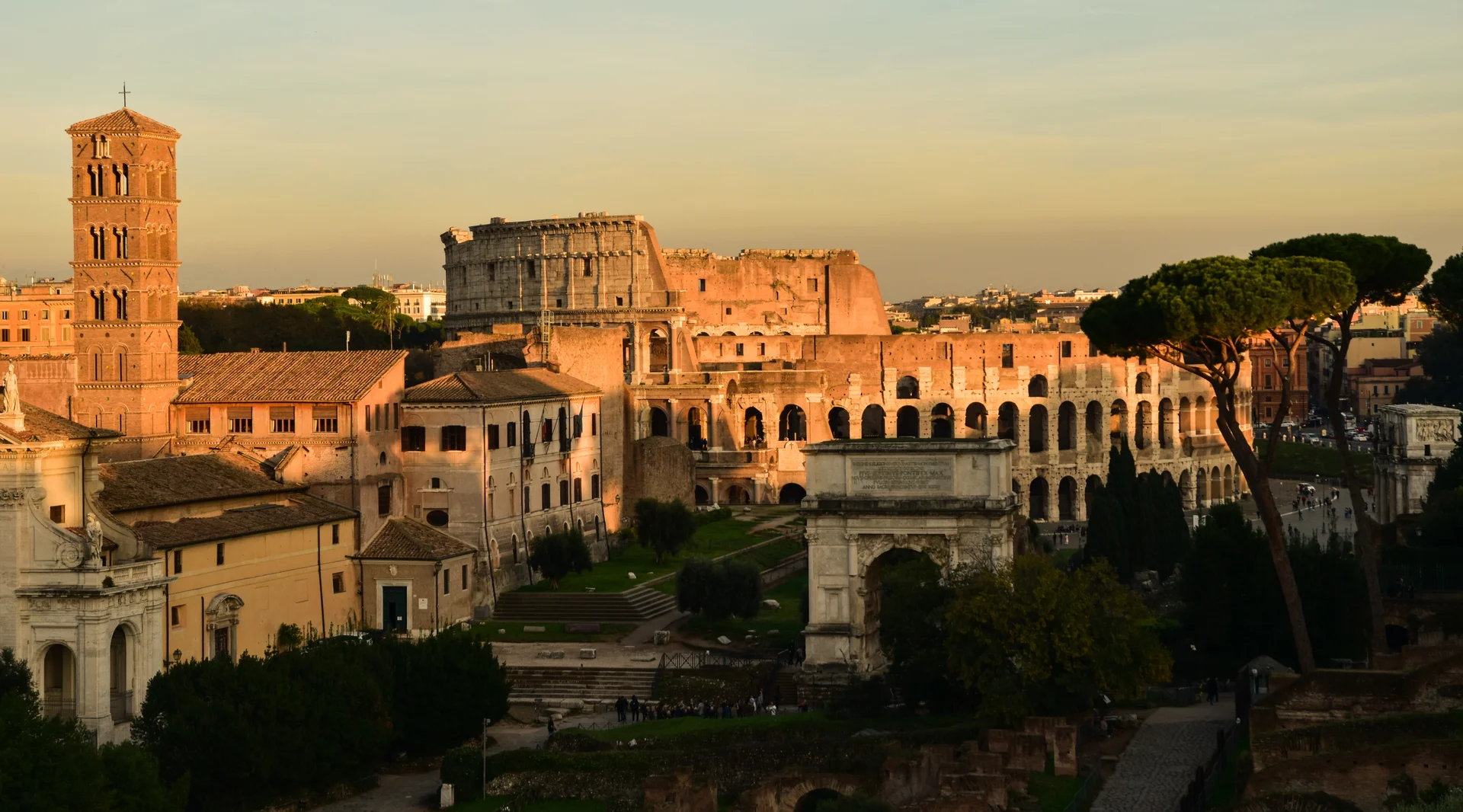
Upper Tier Panoramic Views
Ascend to upper tiers for breathtaking panoramic views across Rome's historic centre where ancient monuments blend with Renaissance palaces and modern cityscape. From this elevated position, appreciate the Colosseum's strategic location at the Roman Forum complex heart, with Arch of Constantine visible to the south. These upper galleries provide exceptional photography opportunities and profound sense of massive architectural scale that few structures achieve. The perspectives reveal how elliptical geometry creates perfect sightlines—sophisticated design demonstrating Roman understanding of crowd dynamics and spectator experience. During golden hour, warm Mediterranean light bathes ancient stone, creating magical atmosphere that has captivated visitors for centuries.
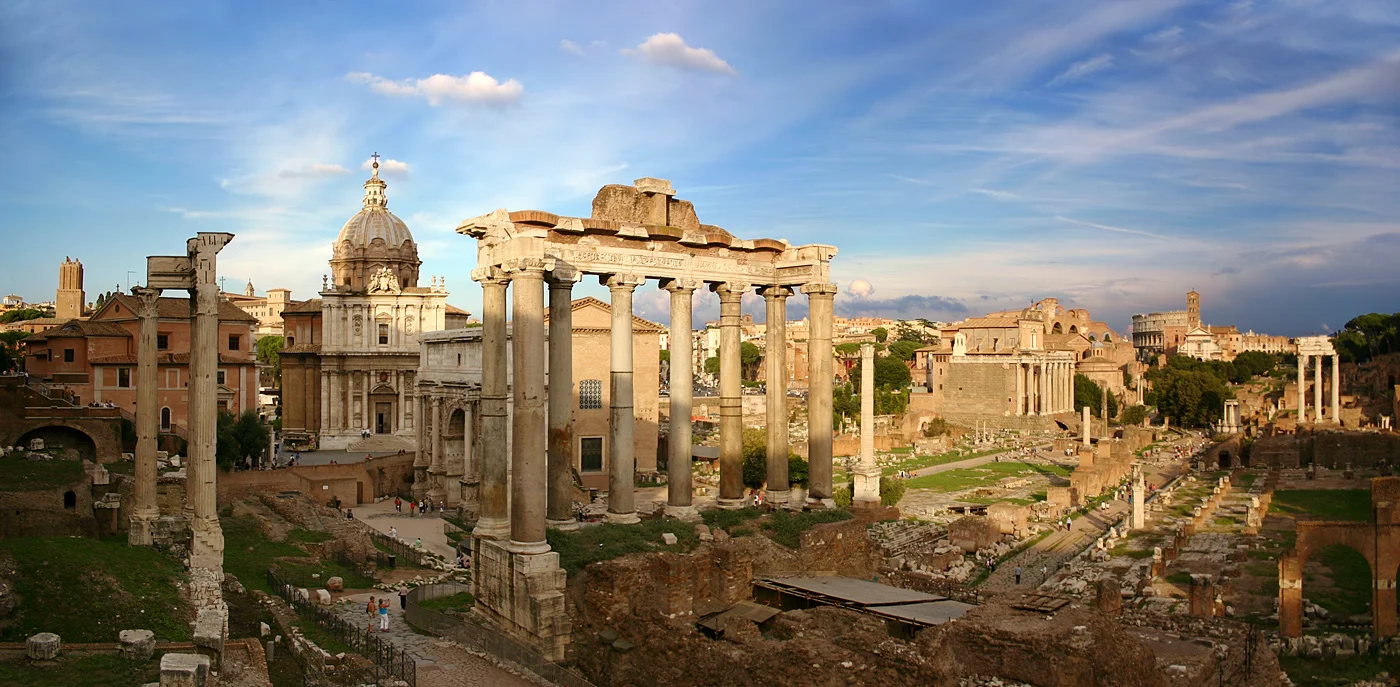
Roman Forum Archaeological Complex
Extend your visit to explore the sprawling Roman Forum where political, commercial, and religious life flourished for over a millennium. This archaeological treasure preserves temples, basilicas, and government buildings where senators debated momentous decisions and merchants traded goods from across the empire. Walking along the ancient Via Sacra, follow footsteps of triumphant generals and emperors who shaped Western civilisation. The Temple of Saturn and Arch of Septimius Severus offer tangible connections to Rome's extraordinary past. The Forum's proximity to Colosseum makes combined exploration essential—the Forum representing civic governance and democracy whilst Colosseum embodied entertainment and imperial power, together revealing sophisticated Roman urban planning.
Location & Planning
Book tickets online through official Parco Colosseo website for timed entry avoiding queues. Combined tickets include Roman Forum and Palatine Hill valid two days. Metro Colosseo station (Line B) provides direct access. Underground tours require separate advance booking.
Loading map...
Frequently Asked Questions
The Colosseum is the largest amphitheatre ever built, constructed in Rome between 70-80 AD. Famous for hosting gladiatorial combat and animal hunts for 50,000-80,000 spectators, it represents Roman engineering pinnacle and remains ancient Rome's most iconic symbol.
Emperor Vespasian initiated construction around 70 AD, with son Titus completing the amphitheatre in 80 AD. Built by thousands of workers using concrete, travertine, and brick, construction took approximately 8 years. Emperor Domitian later added underground hypogeum chambers.
The Colosseum hosted gladiatorial combat, exotic animal hunts featuring lions and elephants, mock naval battles in flooded arenas, and public executions. These spectacles served as entertainment and political tools for emperors to demonstrate power and maintain public support.
Book tickets online through official Parco Colosseo website for timed entry avoiding queues. Combined tickets include Roman Forum and Palatine Hill. Underground tours require separate advance booking. Arrive with printed confirmation and identification. Allow minimum 90 minutes.
April-June and September-October offer ideal weather with moderate comfortable temperatures and manageable crowds. Early morning slots provide optimal lighting, cooler conditions, and fewer visitors. Avoid midday during summer when temperatures exceed 30°C and tourist crowds peak.
The hypogeum is two-level underground network beneath arena floor containing chambers and 80 vertical shafts with pulley-operated lifts. This system housed gladiators and wild animals, enabling dramatic entrances through trap doors. Access requires specialist tour booking.
UNESCO World Heritage Criteria
Inscribed in 1980, this site meets 5 of UNESCO's 10 criteria for Outstanding Universal Value
Criterion (i): Masterpiece of human creative genius
The Colosseum represents an absolute masterpiece of Roman engineering genius through revolutionary structural innovations including concrete vaulting systems, complex underground hypogeum machinery enabling spectacular theatrical effects, and architectural design influencing stadium construction for two millennia.
Criterion (ii): Interchange of human values
Imperial Rome facilitated exceptional interchange of human values across three continents, spreading Roman architectural principles, legal systems, engineering techniques, and urban planning concepts throughout Europe, North Africa, and the Middle East, fundamentally shaping Western civilisation.
Criterion (iii): Testimony to cultural tradition
The Colosseum provides unique testimony to the Roman Empire at its zenith, representing the political, social, and entertainment culture of ancient Rome through monumental architecture demonstrating imperial power whilst revealing societal values through gladiatorial spectacles and public entertainment.
Criterion (iv): Outstanding architectural/technological ensemble
The Colosseum exemplifies outstanding architectural achievement through innovative elliptical amphitheatre design accommodating 50,000 spectators, revolutionary use of concrete and complex vaulting systems, sophisticated crowd management features, and engineering solutions that established templates for modern stadium architecture.
Criterion (vi): Associated with events/traditions/ideas/beliefs/artistic works
The Colosseum remains directly associated with fundamental aspects of Roman culture including gladiatorial combat, martyrdom narratives, and imperial spectacle, representing ideas about entertainment, public life, and political power that profoundly influenced Western cultural traditions and continue resonating in contemporary society.
Historical Context
Imperial Construction (70-80 AD)
Emperor Vespasian initiated construction around 70 AD on Nero's Golden House lake site. His son Titus completed and inaugurated the amphitheatre in 80 AD with 100 days of celebratory games. Emperor Domitian added final modifications including hypogeum underground chambers.
Golden Age of Spectacles (80-217 AD)
The Colosseum hosted legendary gladiatorial contests, exotic animal hunts, mock naval battles, and theatrical performances embodying Roman power. Public games served as political tools for emperors to maintain popularity and demonstrate imperial wealth through spectacular entertainment.
Late Imperial Decline (3rd-6th centuries)
As the Western Roman Empire weakened, spectacles became less frequent and elaborate. The last recorded gladiatorial combat occurred in 435 AD, with animal hunts continuing until 523 AD. Earthquakes in 443 and 508 AD caused significant structural damage to the southern external wall.
Medieval Transformation (7th-15th centuries)
The Colosseum was repurposed as housing, workshops, and fortress for powerful noble families including the Frangipane dynasty. Extensive stone quarrying systematically removed travertine, marble, and bronze for constructing churches and palaces throughout Rome, creating today's distinctive weathered appearance with characteristic holes marking removed clamps.
Religious Significance (18th century)
Pope Benedict XIV consecrated the Colosseum as sacred site honouring Christian martyrs in 1749, though modern scholarship questions martyrdom execution extent at this location. Religious designation prevented further destructive stone quarrying and sparked initial serious preservation interest amongst Catholic authorities and scholars.
Modern Restoration (19th century-present)
Systematic archaeological excavation and restoration began in 1800s with major 20th-century reinforcement projects including buttresses for earthquake-damaged sections. The 1980 UNESCO World Heritage inscription recognised universal cultural value. Current comprehensive restoration programmes ensure structural stability whilst enabling sustainable public access for millions of annual visitors through advanced conservation techniques.
Conservation & Protection
Current Conservation Status
The Colosseum undergoes continuous conservation addressing structural stability, pollution damage, and tourism impact through international collaboration and innovative restoration techniques balancing preservation with public accessibility.
Conservation Challenges
- Air pollution accelerating stone erosion and surface degradation across travertine facade
- Tourism pressure from 7 million annual visitors requiring crowd management infrastructure
- Structural instability in southern wall damaged by earthquakes necessitating ongoing reinforcement
- Vegetation growth threatening masonry integrity whilst creating microclimatic moisture conditions
- Climate change bringing extreme weather including intense rainfall affecting ancient materials
Active Conservation Efforts
- Comprehensive multi-year restoration project systematically cleaning facade using advanced laser technology, reinforcing damaged structures, and improving visitor facilities whilst preserving original stone surfaces
- Sophisticated monitoring systems continuously tracking structural movement, moisture levels, and environmental conditions affecting preservation
- Visitor management protocols including timed entry and capacity limits reducing physical wear on ancient materials
- International conservation partnerships bringing UNESCO expertise and advanced scientific restoration techniques from global institutions
- Arena floor reconstruction enabling enhanced understanding of Roman engineering whilst protecting fragile underground chambers
Image & Content Attribution
Research & Content Sources
Photography & Visual Media
Last updated: 6 October 2025